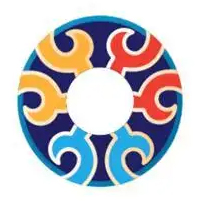Kakuto: Not Cloisonne, not Filigree Inlay, the unique traditional craft.
The first impression that Kakutu gives people is that it looks like cloisonne from a distance and inlaid flower silk up close. It is a unique Chinese craftsmanship, which is said to have originated from Russia and was introduced to Persia. It combines Chinese cloisonne and inlaid flower silk techniques in the Ming Dynasty, forming the unique Kakutu art.
Kakutu combines the strengths of cloisonne and inlaid flower silk, integrating Eastern and Western cultures. It is famous for its dazzling colors and attractive shapes, and it has been favored by emperors of all dynasties and designated as a tribute to the imperial court.
However, although Kakutu has been prominent in the palaces of Chinese emperors for hundreds of years, it is not well-known among ordinary people, and many people mistakenly think that it is cloisonne.
In fact, Kakutu and Cloisonne have significant differences. Firstly, in terms of body and materials, Cloisonne usually uses copper body and copper wire, while Kakutu must use pure gold and silver body and gold and silver wire. Secondly, in terms of filigree craftsmanship, Kakutu is far more complex than imagined. Thirdly, in the firing process, Kakutu's dot blue craftsmanship is more complex than Cloisonne. In addition, Kakutu's flower wire is higher than the glaze surface, giving it a more three-dimensional appearance, which is very different from Cloisonne's flower wire that is flush with the surface.
Kakutu is a Chinese traditional craft that inherits the delicacy of Cloisonne and the splendor of filigree inlay. It has unique characteristics that are neither Cloisonne nor filigree inlay.

